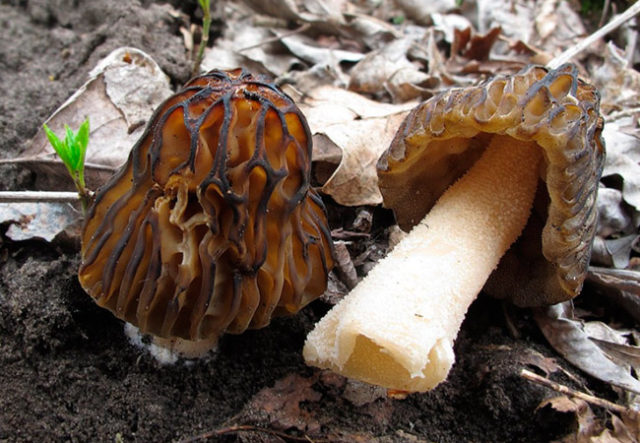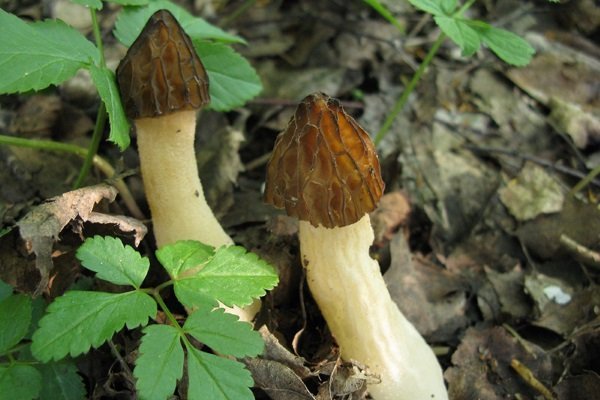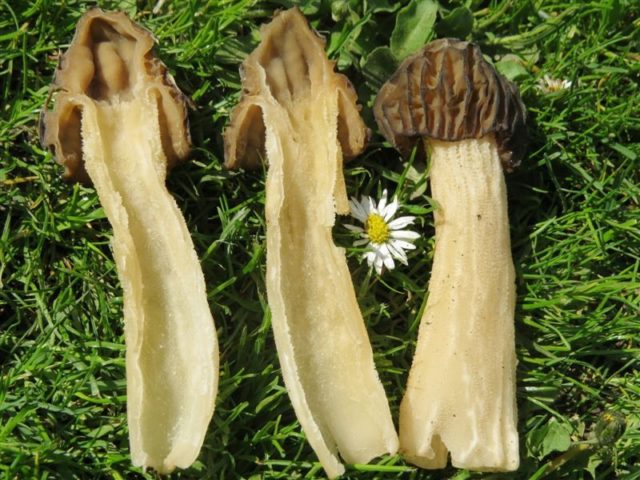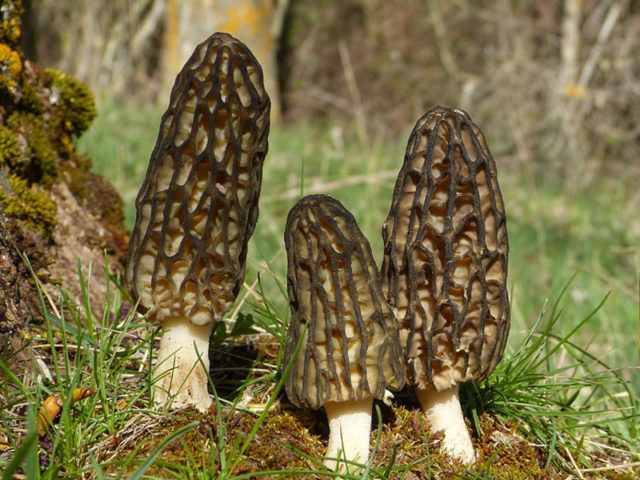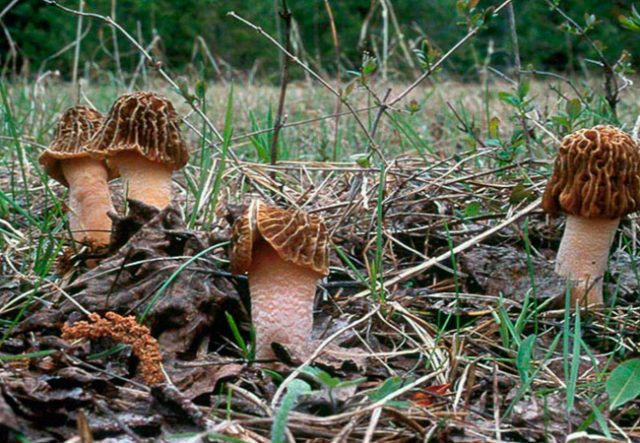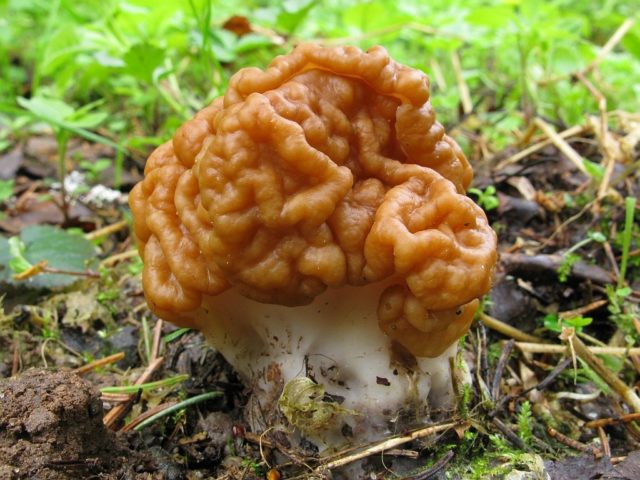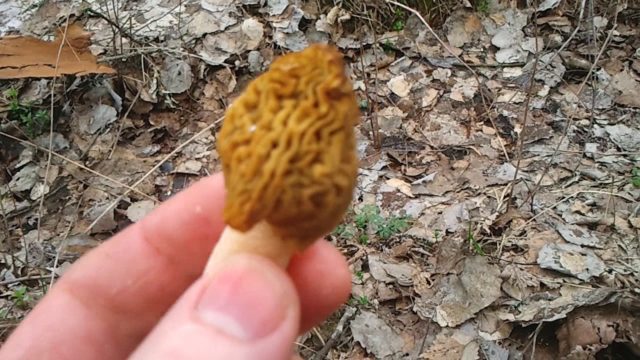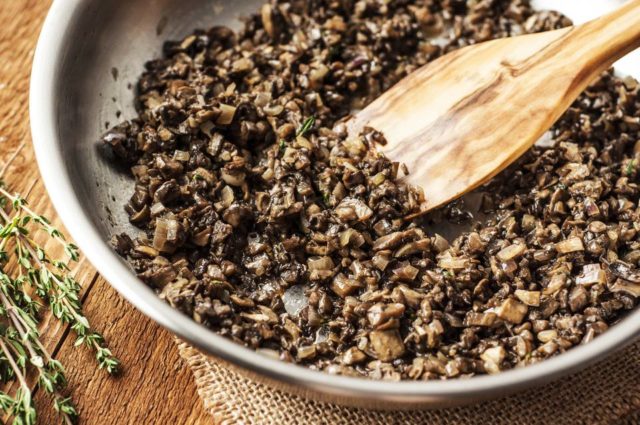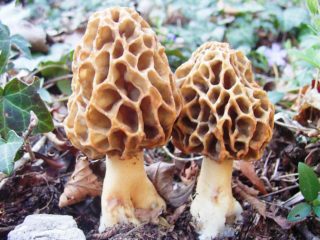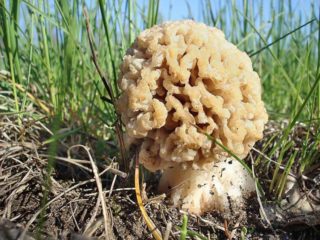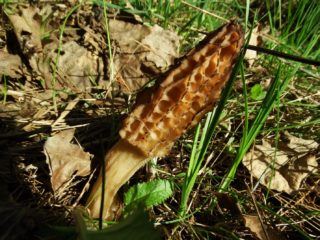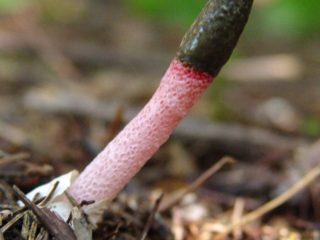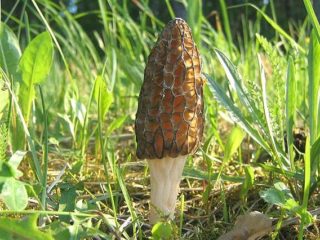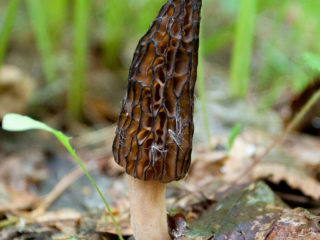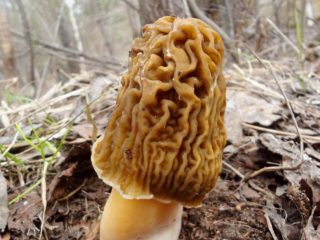Content
The morel mushroom is one of the very first to appear in forests and park areas. In regions with warm climates, the hunting season for these interesting mushrooms begins in May and lasts until frost. There are several types of this culture. Semi-free morel (lat. Morchellaceae) can be difficult for an inexperienced mushroom picker to distinguish from its counterparts, edible and poisonous.
Where do semi-free morels grow?
Mushroom pickers rarely manage to stumble upon thickets of semi-free morel. It grows in central Russia and southern regions.In Germany they are collected in forests and parks, and in Poland it is listed in the Red Book.
Semi-free morels grow mainly in deciduous forests, where birch trees predominate. You can find this species near aspen, linden or in oak groves. It is difficult to look for these mushrooms, since they prefer to hide in tall grass and even nettles, which is unusual for other representatives of the mushroom kingdom.
Experienced lovers of quiet hunting advise looking for semi-free morels in areas of old forest fires.
What do semi-free morels look like?
The semi-free morel got its name because of the special structure of the cap. Small relative to the stalk, it is covered with cells. It seems that the mushroom has shriveled.
The maximum height of the semi-free morel can reach 15 cm. But the majority of specimens found do not exceed 6 - 7 cm.
The cap of the semi-free morel is brown, shaped like an irregular cone. The shade can vary from light to dark. The leg is hollow inside, white or yellowish-olive in color.
A feature of the semi-free morel is the fastening of the cap and stem. These two parts of the fruiting body touch only at one point. The lower edge of the mushroom cap is free.
Is it possible to eat semi-free morels?
Scientists classify the semi-free morel as conditionally edible. They cannot be consumed fresh. The fruit body contains a small amount of the toxin gyrometrin. This substance suppresses the production of red blood cells and negatively affects the functioning of the liver and spleen. As a result of cooking foods containing a toxin in a large amount of liquid, the substance passes into water. The product becomes safe.After preliminary heat treatment, various dishes and sauces can be prepared from semi-free morels.
Taste qualities of semi-free morel mushroom
In many European countries, morels are considered a delicacy. In Russia, these mushrooms are not very popular. Although the aroma and rich mushroom taste are inherent in this species.
Culinary experts note that the taste of the mushroom product also changes depending on the method of preparation. Therefore, lovers of quiet hunting try to stock up on dried and frozen preparations in order to feel all the splendor of this amazing gift of the spring forest.
Benefits and harm to the body
Semi-free morels contain at least 90% water and contain almost no fat. A large amount of vegetable protein, vitamins and polysaccharides make these mushrooms especially attractive for those who want to lose extra pounds.
In folk medicine, morel preparations are used to treat eye diseases and in the fight against diseases of the joints and spine. Scientists believe that eating properly prepared mushrooms can improve metabolism and intestinal function.
Substances contained in the semi-free form of the mushroom promote the production of insulin, which has a positive effect on the health of patients with diabetes.
The pharmaceutical industry uses various types of morels to make antioxidants and blood purifiers.
Spring mushrooms are contraindicated for pregnant and lactating women. At the same time, ready-made morel-based preparations are used as prescribed by a doctor for the treatment of toxicosis in pregnant women.
Limit the consumption of mushrooms for diseases of the liver (cholecystitis), stomach (ulcers, acute gastritis) and individual intolerance.
Poisoning by all types of mushrooms is possible due to improper processing and violation of food storage rules.
False doubles of semi-free morels
In addition to the similarity of the semi-free morel with other representatives of this species, there are also false doubles that can be dangerous to human health.
False, or stinking, morel
Botanists also call this species the common merry. The mushroom grows throughout Russia from May to mid-autumn.
Veselka appears on the soil surface in the form of a white egg. At this stage it is considered edible. In France, for example, delicacies are prepared from veselka. In this form, the mushroom can grow for several days. Then, within an extremely short time (15 minutes), the egg bursts, and a mushroom emerges from it on a thin stalk with a cellular cap. A distinctive feature of the Veselka is the unpleasant aroma of rotting meat.
It is very difficult to confuse the false and semi-free species. The mucous surface and smell of the fungus will help to correctly identify the find.
Conical morel and morel cap
The semi-free morel is often confused with the conical type and the morel cap. These varieties differ in the fastening of the cap and color. But they are not dangerous to mushroom pickers. Conditionally edible plant products can be eaten after proper processing.
Conical morel on the picture:
Morel cap:
Line
It is important not to confuse semi-free morel with lines from the Discinaceae family. Although they belong to different species, they are very similar in external parameters.The cellular structure of the cap of one color makes the stitches the most dangerous for beginners.
An important difference that mushroom pickers should remember is the solid structure of the stem, the stitching and the tight fit of the cap.
Both species contain identical toxin, but in different quantities.
Rules for collecting semi-free morels
Mycologists claim that mushrooms are capable of accumulating harmful substances in their fruiting bodies from the atmosphere and soil. Therefore, it is prohibited to harvest them in environmentally hazardous areas.
They collect spring gifts in forests located at least a kilometer from highways with heavy traffic and near industrial facilities.
The stem is cut with a knife above the soil surface so as not to damage the condition of the mycelium.
Old copies are not collected. Mushrooms damaged by insects or mold should also not be taken into the basket.
Use
Semi-free morel is not used for making pickles and marinades. Most often it is consumed immediately after collection or dried. Less commonly, the harvested crop is frozen for the winter.
Before cooking, the mushrooms are soaked for at least an hour and washed well. Due to the cellular structure, sand, loose soil and other debris can collect in the cap.
Boil the mushrooms for about half an hour and then be sure to wash them with running water. Only after such treatment can the fruiting bodies be fried or used to prepare other hot dishes.
The spring harvest is dried outdoors in the shade. Lack of ventilation in the oven can make the cooking process hazardous to health. The toxins contained in the caps and legs can cause an allergic reaction in people prone to it.
Dry powder can be eaten three months after preparation. It is believed that during this period toxic substances are completely decomposed.
Conclusion
The semi-free morel, despite its unassuming appearance, is considered by lovers of “quiet hunting” to be one of the most interesting. Early appearance in forests and the absence of worms in fruiting bodies makes this type of mushroom especially popular.
